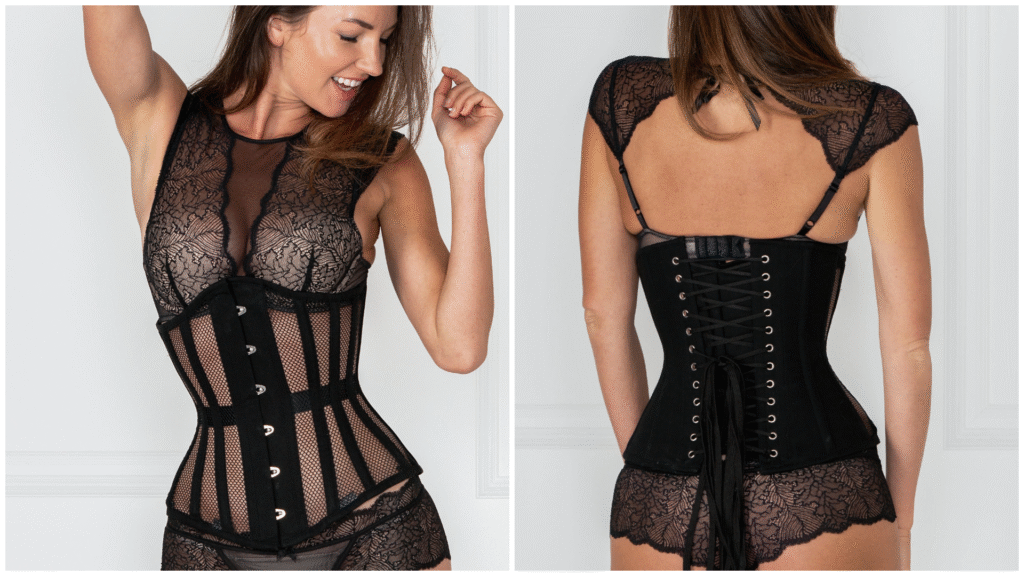Waist training is becoming more and more popular among the fashion and fitness communities. Influenced by celebrities or influencers, many desire the hourglass shape promised by waist cinchers and corsets. But with the increased attention comes a very important question: Is waist training safe? This in-depth guide summarizes everything you need to know before entering the world of waist cinchers.
What is Waist Training?
Waist training is the process of wearing a supported garment, like a steel boned corset or latex waist trainer, to shape and narrow the waist over time. Some wear it for appearance, while others do so for posture support or post-pregnancy rehabilitation. Continued use over time is thought to decrease the natural waist circumference and mold the midsection into a more defined hourglass silhouette.
Is Waist Training Safe?
The safety of waist training also comes down to the way it’s done. Proper and moderate practice of waist training is safe, but improper use, such as wearing it too tightly, for long hours, or using cheap or poorly designed products, can lead to discomfort and even health problems.
Possible Dangers of Waist Training
Wearing a waist trainer too tightly or for long hours can lead to the following issues:
- Respiratory Problems: Tight lacing may compress the diaphragm and minimize lung capacity.
- Digestive Discomfort: Abdominal pressure can disrupt digestion, resulting in acid reflux or constipation.
- Muscle Weakness: Dependence on corset assistance can reduce core and back muscles.
- Compression of Organs: Too much tightness will move internal organs into unnatural positions, causing pain or long-term problems.
Benefits of Safe Waist Training
When employed responsibly, waist training can have some advantages:
- Better posture is the most well-known benefit. Corsets support the back and spine, promoting good alignment and inhibiting slouching.
- Temporary reduction in waist size is the other major benefit. The supportive garment provides a quick slimming solution, which is great for dressing up for a special occasion.
- Postpartum women in some instances find steel boned corsets useful to support sagging muscles after pregnancy. Medical consultation, however, is advised before applying waist trainers after pregnancy.
- Confidence is boosted as well, since most people like the smooth silhouette and feeling of control a corset gives.
Safety in Waist Training
Selecting the appropriate corset is critical. Steel-boned corsets with cotton lining or mesh fabric are good choices. Steer clear of fashion or plastic-boned corsets, as these will not have the structural integrity needed.
- Start slow: Wear your corset for 1 to 2 hours per day initially, and gradually increase the duration based on comfort. Never overtighten; your corset should feel snug but not painful.
- Listen to your body: If you experience pain, numbness, or difficulty breathing, remove the corset immediately. Allow your body to rest between uses.
- Combine waist training with a balanced diet and exercise. Corsets are not a replacement for fitness and must be incorporated into a lifestyle change.
Waist Training Expert Views
Doctors generally recommend restraint when it comes to waist training. Although occasional waist training is not going to harm, constant tight lacing is likely to cause issues. Do consult a physician before embarking on waist training, particularly if you suffer from existing health conditions.



Corset vs. Waist Trainer: Which is Safer?
Corsets, particularly those with steel boning, are structuring and supporting and hence safer for use in the long term. Latex waist trainers are more compliant but can be hot and constricting. Always opt for quality and comfort over looks.
Final Thoughts
So, is waist training safe? Yes—if done thoughtfully and with care. Select well-designed garments, don’t pull too tight, and use waist training as a supplement to a healthy life. With proper care, you can appreciate the aesthetic and posture advantages of waist training without sacrificing your health.
Always put your body first. Begin slowly, be educated, and remember that genuine confidence occurs when you feel good as much as you appear good.















